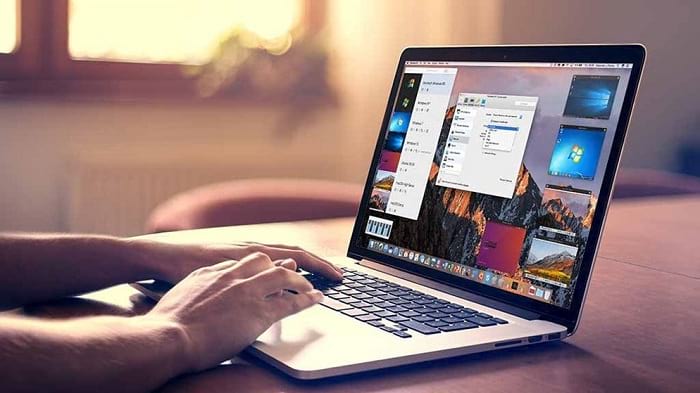Parallels Desktop Lite allows you to easily run Windows, Linux, and their applications on your Mac. You don't have to reboot your Mac to switch between operating systems or when switching between Mac, Windows, or Linux applications.
In this article we explain how to install Windows on your Mac, first with Apple's dual-booting Boot Camp Assistant and then with third-party virtualisation software. We also discuss the pros and cons of each approach. Which Macs can run Windows?
Qt to wmv converter for mac. So far my best option is a demo version of iView MediaPro, which won't convert WMV to QT, but will allow me to extract every single frame. Then I'd import all the frames into iMovie and somehow get the sound in later. If it can't be converted, is there any other way to get it into iMovie? Any way to do this without upgrading to Quicktime Pro? This is probably the only time I'll need to do this in the near future.

This depends on the version of Windows you're trying to install, but any recent Mac should be able to run Windows 10. In fact, most Macs since late 2012 support it. Note, however, that a glitch has been discovered with some iMac models, which means you can't upgrade them to Mojave if you already have BootCamp installed. For more information on this, see. Boot Camp vs virtualisation There are two main options if you need to install Windows on your Mac, and the option you choose will generally depend on the type of software you need to run.
Creating Install Disk For Mac Os Lion
The first option, provided by Apple itself with the Boot Camp Assistant that is installed on every Mac, is called 'dual-booting', as it gives you the ability to start up (or 'boot') your Mac using either Windows or macOS. The Boot Camp Assistant can split your Mac's hard drive (or solid state drive) into two sections, called 'partitions'. It leaves macOS on one partition, then installs Windows on the second partition; you simply choose which operating system you want to run by pressing the Alt key on your keyboard when you 'boot' your Mac.
Installing Windows on a Boot Camp partition with this method effectively turns your Mac into a straightforward Windows PC, and devotes all of your Mac's processor power and memory - and its graphics card if it has one - to running Windows alone. That's the best option if you want to play Windows games, or run high-end graphics and design software that needs all the power it can get.
Hi, Where can i get the windows 8 for mac? Should I just buy a normal windows 8 from the microsoft website? Or does the file need to be in a different format? Once the disk image has downloaded, locate it on your Mac, mount it and double-click the VirtualBox.pkg file to install the application. You'll need 175MB of free space on your computer to accommodate it, in addition to the space required by Windows (up to 32GB).
The only disadvantage of Boot Camp is that you lose access to all your normal Mac apps while you're running Windows, which means you have to shut down Windows and boot back into macOS if you want to use Mac apps such as Apple Mail or Photos. This is where the other option, known as 'virtualisation', can come in handy. Instead of splitting your hard drive into separate partitions for macOS and Windows, you use a virtualisation program (such as or ) to create a 'virtual machine' that runs within macOS itself. The virtual machine (VM) is simply an app that runs on the Mac just like any other Mac app. However, the virtual machine mimics the workings of a PC, allowing you to install Windows on the virtual machine, and then install any Windows apps that you need to run as well. This is definitely the most convenient option, as it means that you can run your Windows apps on the Mac desktop right alongside all your normal Mac apps, so there's no need to dual-boot back and forth between the macOS and Windows as you do when running Boot Camp.